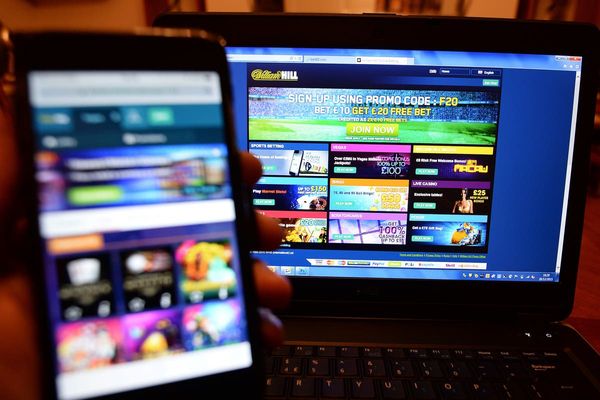
Betting company logos appear as often as 3,500 times during the course of a televised football match, the majority on pitchside hoardings, prompting renewed scepticism about top-flight clubs’ plan to give up front-of-shirt betting ads only.
A study led by psychology experts from four universities measured the volume of gambling adverts during 10 matches that took place last season, featuring every Premier League club.
West Ham v Chelsea featured by far the most betting logos, a total of 3,522, or 37 for every minute of the game. The figure was particularly high because of West Ham’s deal with the online bookmaker and casino firm Betway, whose logo is plastered around the club’s home, the London Stadium.
According to the analysis, the average game featured a gambling logo every 16 seconds.
The study, which also looked at cryptocurrency and financial trading adverts, found that digital pitchside hoardings were by far the most common location for company logos, accounting for more than half of those seen during a game. By contrast, team shirts accounted for only 6.9% of visible gambling logos.
Premier League football clubs agreed a ban on front-of-shirt betting sponsors earlier this year. The voluntary measure does not kick in until 2026 and will still allow firms to advertise on shirt sleeves, pitchside hoardings and other sites around a stadium.
The Big Step, which campaigns for football clubs to cut ties with the betting industry, said the study showed football clubs were not taking gambling’s links to addiction, financial problems and suicide seriously enough.
“This disgusting level of gambling advertising around football stadiums is a national shame and shows why removing the ads from shirts is nowhere near enough,” a spokesperson for the group said.
“Every one of those 3,500 nudges to gamble is a potential hook into addiction for young fans, their parents and even players. The harm gambling advertising causes is no longer ignorable; the government needs to step in and end all gambling advertising in football.”
The Premier League declined to comment.
Betting industry representatives have repeatedly said there is no evidence of links between advertising in football and addiction, but multiple studies have drawn a connection between sponsorship and participation, including “problem” gambling.
Football’s heavy promotion of betting has become increasingly controversial in the light of high-profile cases of players with a gambling addiction.
The Brentford striker Ivan Toney was banned from the game for eight months earlier this year after placing bets on games, including some in which he played. The ban was reduced to eight months after the Football Association took his gambling addiction into account.
Nine Premier League teams including Toney’s Brentford will have a gambling company’s logo on their shirts in the 2023-24 season, either as the main shirt sponsor or on the sleeves. Clubs including Aston Villa have signed new gambling deals this season despite the looming ban in 2026, although Chelsea pulled out of a shirt sponsorship with the controversial cryptocurrency gambling firm Stake.com after pressure from fans’ groups.
The study, led by Jamie Torrance of the University of Chester, analysed gambling, cryptocurrency and financial trading logos in football.
Betway was the most featured gambling brand in football, accounting for 31.2% of visible logos, while Stake topped the crypto league with 28% and FBS was the most widely displayed financial trading logo.
Only 4.4% of gambling logos were accompanied by some form of harm reduction content, such as messages advising greater caution when gambling.
West Ham’s home game against Chelsea featured the most gambling advertising, with 3,522 appearances, while Arsenal’s match against Nottingham Forest featured the fewest, with 219.
Cryptocurrency was most visible at Wolverhampton Wanderers v Brighton, with 1,682 appearances, and least visible at Fulham v Liverpool, where a crypto logo was shown only once.
Manchester City v Aston Villa featured the most financial trading logos, 832, while Everton’s game against Southampton and Brentford v Bournemouth included none.
The study used a different methodology from a previous study that found gambling logos appeared 700 times in a game. The previous study counted the appearance of one company’s logo on screen only once, even if it appeared multiple times. The new study counted each iteration.










